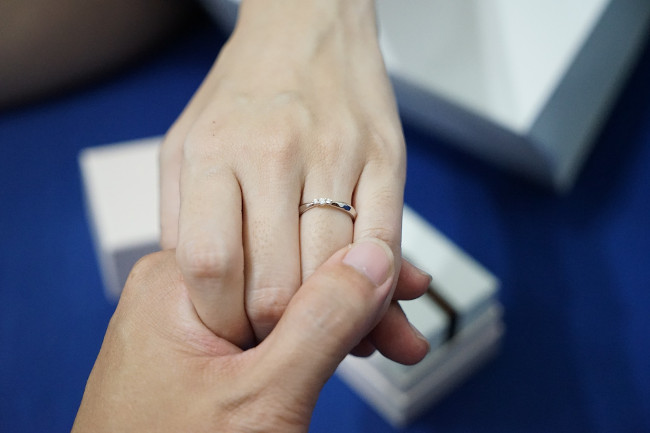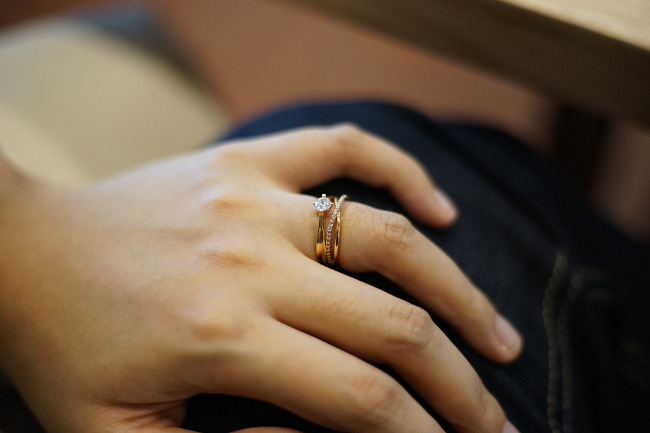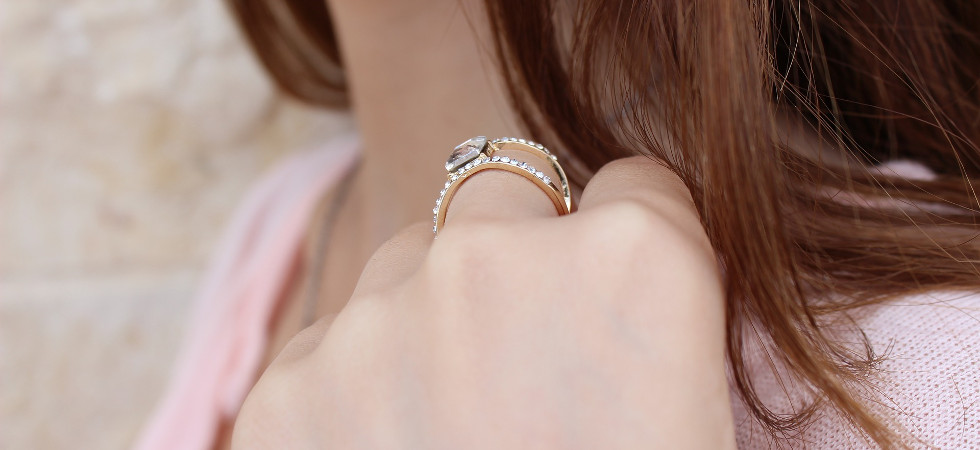Getting down on one knee and asking the person of your dreams to marry you is one of the most important moments in anyone’s life. However, through time, tradition and circumstance, picking a ring is just as important as how you propose. The ring isn’t just a symbol of your love, it’s also something they’ll wear for the rest of their life – and as such needs to be perfect.
However, thanks to a huge amount of options such as band material, diamond quality and even the setting, choosing the right ring can be confusing – but luckily we’ve enlisted the help of Lycetts, experts in insuring engagement rings. Their specialists are talking us through what to look for in a ring…
Price
When you’re buying a diamond ring, price is obviously on your mind. One thing to note is that you shouldn’t put yourself into needless debt. A ring should be costly enough to guarantee quality and to show your financial commitment, but not put you into difficulty. The age-old three month’s salary guidelines are long dead. To put things simply, spend as much as you can afford so that she loves the ring and you feel like you’ve spent enough – but don’t get into financial trouble over it.

Band materials
The first stage of buying a ring involves the band material, of which you’ll have three main choices:
Gold: Available in various carats between 14,18,22 and 24 carats, gold is a timeless precious metal and a classic. 22 is the purest form for jewellery.
Silver: Silver is a long-standing precious metal, but is prone to tarnishing. Great for enhancing the shine of a diamond though.
Platinum: Made with a white-silver look that is shinier than other materials, platinum is a good alternative to silver as its ultra-durable and doesn’t easily tarnish. Thanks to this, platinum is the most expensive band material.
Palladium: A chemical used to coat white-gold rings, this material can also make actual bands that are hypoallergenic and develop a patina.
White Gold: As prestigious as gold, but alloyed with precious palladium or silver to give it a shine. The perfect choice for enhancing the shine of a diamond.
Picking a setting
The setting refers to how the diamond or precious stone sits on the ring. Surprisingly, this can alter the appearance and the functionality so it’s important to choose something that suits your intended.
Prong: Prong settings are comprised of small metal claws that grip the stone in place. These can vary in size or amount, but can be prone to snapping – making engagement ring insurance vital. However, they increase the light that gets to the diamond – making it shine bright.
The Cathedral: This popular variation involves setting diamond quite high.
Tiffany: A six-prong style that started as a brand choice and is now a fashion statement.
Bezel: The bezel setting is perfect for active people as its modern look comprises of a bezel band that holds the stone in place, decreasing the risk of snagging on clothing.
Tension: Tension settings set the stone between two points that hold it in place with tension. Most use a bezel or prong setting underneath the stone for added security.
Channel: A channel of diamonds set into the ring itself.
Pavé: From the French word ‘to pave’ this refers to a ring which is ‘paved’ with diamonds.
Halo: Small diamonds set In a repeating circular pattern to form a ‘halo’
There are many other variations available, but those listed are the most popular. Ultimately you need to consider what your partner will be doing when she wears the ring and what styles she likes. Minimalists will prefer a prong or bezel, while traditionalists will prefer the prong or cathedral setting.
Choosing a diamond
When it’s time to pick the most important part of the ring, you might start to panic due to the choices available. Don’t worry – the only elements you really need to consider are the carat, clarity and shape.
The carat of a diamond can vary. Most people buy a diamond that has anything between a 0.1 to a full 1 carat stone. Depending on how much money you’re spending, carats go up to over 100 carats, which are worth millions. Unlike gold, where carat refers to purity, the carat of a diamond refers to weight. You can often net a discount from a custom ring supplier by purchasing a diamond that is just outside of popular weights such as 1/2ct, ¾ ct and 1ct. You can also find stones that have a larger diameter despite the weight, which makes them look larger even if they don’t cost as much as a heavier stone.
If you’re ordering diamonds from a custom ring designer or having an engagement ring made from scratch, you’ll have to pick clarity and colour. It goes without saying you’ll want to pick the best clarity you can, since shine is everything. Confusingly, the colour isn’t actually important, as the average person won’t notice a difference – it’s mainly a term for jewellers and experts.

Diamond shape
Choosing the shape can be tricky – here’s a guide to the popular styles.
Round: Round diamonds are the most popular, accounting for 75% of all diamonds sold. This shape maximises brightness thanks to reflective properties.
Princess cut: Princess cuts are fancy shapes that speak of elegance.
Oval: Oval’s are elongated, increasing the perception of size.
Marquise: A football-shape diamond that has the largest surface area, making it look the biggest.
Pear: Pear-shaped diamonds combine marquise and round shapes for exceptional symmetry.
Cushion: A cushion diamond is a square cut that has rounded edges.
Emerald cut: Emerald cuts create a hall of mirrors effect thanks to their intricate design.
Radiant cut: A brilliant-cut design that has a lively face.
Heart-shaped: An iconic symbol crafted in diamond.
All you’ve got left is to find out her size. Whether you use a ring she wears normally or go for something sneakier, we can’t help – so you’re on your own!






















